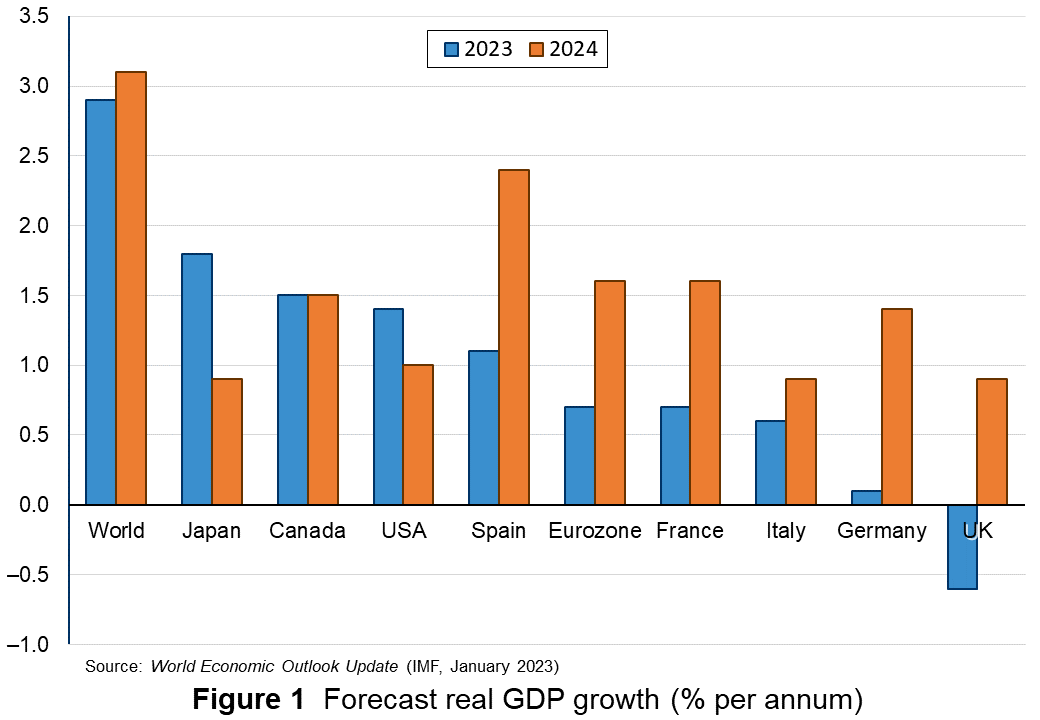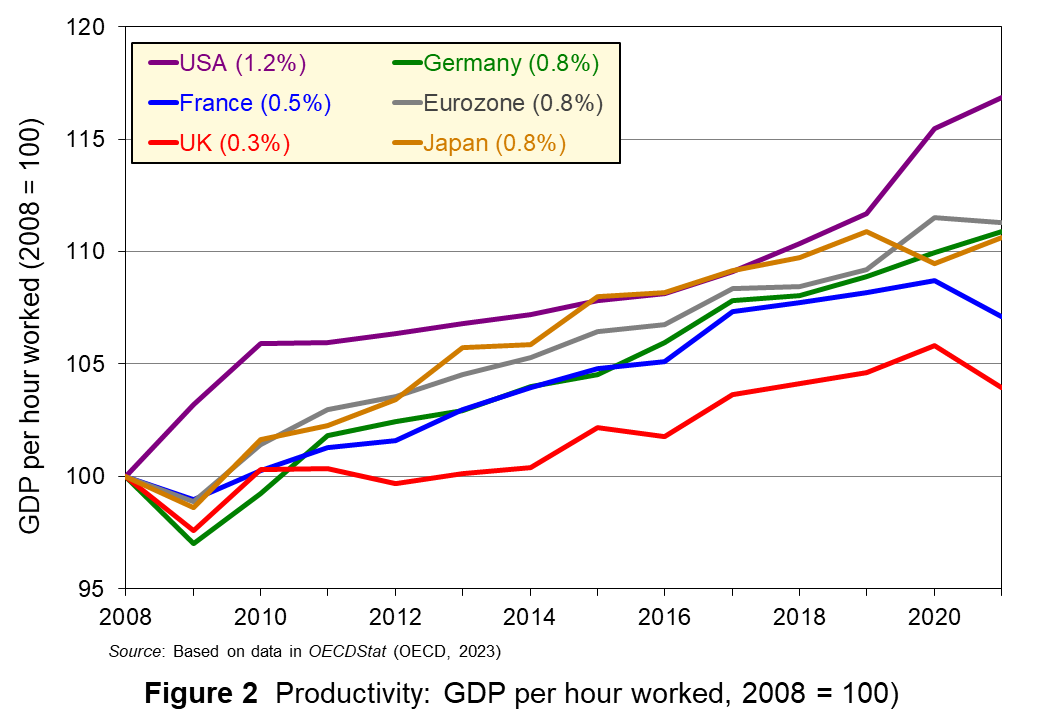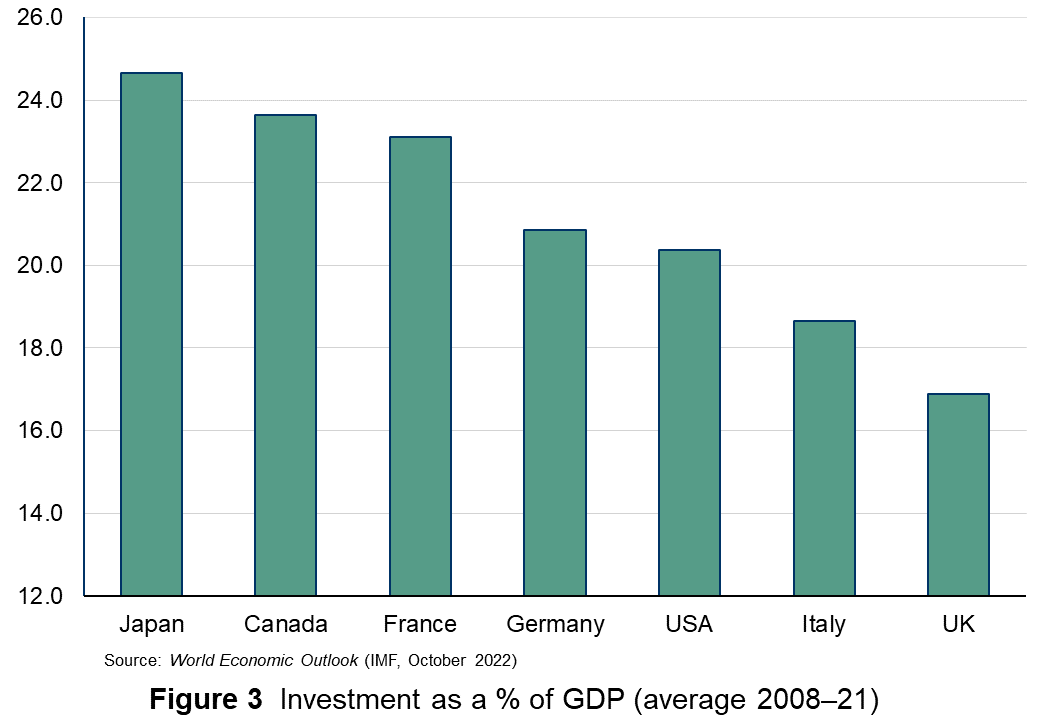 Tickets for Beyonce’s 2023 UK Renaissance tour went on general sale via Ticketmaster’s website at 10am on Tuesday 7 February. Throughout the day, social media were full of messages from fans complaining about technical issues, long online queues and rising prices. This is not the first time this has happened. Similar complaints were made in 2022 when tickets went on sale for tours by Bruce Springsteen, Harry Styles and Taylor Swift.
Tickets for Beyonce’s 2023 UK Renaissance tour went on general sale via Ticketmaster’s website at 10am on Tuesday 7 February. Throughout the day, social media were full of messages from fans complaining about technical issues, long online queues and rising prices. This is not the first time this has happened. Similar complaints were made in 2022 when tickets went on sale for tours by Bruce Springsteen, Harry Styles and Taylor Swift.
With the general sale of tickets for Beyonce’s tour, many fans complained they were waiting in online queues of over 500 000 people. Others reported their frustration with continually receiving ‘403 error’ messages.
Market dominance
In November 2022, Ticketmaster’s website in the USA constantly crashed during the pre-sale of tickets for Taylor Swift’s tour. This led to the general sale of tickets being cancelled.
In response to the public anger that followed this decision, the Senate’s antitrust subcommittee organised a hearing with the title – ‘That’s The Ticket: Promoting Competition and Protecting Competition and Protecting Consumers in Live Entertainment.’
Senator Amy Klobuchar, the Chair of this committee, stated that
The issues within America’s ticketing industry were made painfully obvious when Ticketmaster’s website failed hundreds of thousands of fans hoping to purchase tickets for Taylor Swift’s new tour, but these problems are not new. For too long, consumers have faced long waits and website failures, and Ticketmaster’s dominant market position means the company faces inadequate pressure to innovate and improve.
Ticketmaster merged with Live Nation in 2010 to become the largest business in the primary ticket market for live music events. Some people have accused the firm of abusing its dominant market position by failing to invest enough money in its website, so leading to poor customer service.
Dynamic pricing
 Fans have also been complaining about the system of dynamic pricing that Ticketmaster now uses for big live events. What exactly is dynamic pricing?
Fans have also been complaining about the system of dynamic pricing that Ticketmaster now uses for big live events. What exactly is dynamic pricing?
Firms with market power often adjust their prices in response to changing market conditions. For example, if a business experiences significant increases in demand for its products in one quarter/year it may respond by raising prices in the following quarter/year.
With dynamic pricing, these price changes take place over much shorter time periods: i.e. within minutes. For example, in one media report, a Harry Styles fan placed £155 tickets in their basket for a concert at Wembley stadium. When the same fan then tried to purchase the tickets, Ticketmaster’s website sent a message stating that they were no longer available. However, in reality they were still available but for £386 – the price had instantly jumped because of high demand. Continually monitoring market conditions and responding to changes so quickly requires the use of specialist software and sophisticated algorithms.
Arguments for dynamic pricing
With ticket sales taking place months/years in advance of most live events, it is difficult for artists/promotors to predict future levels of demand. Given this uncertainty and the importance for the artist of playing in front of a full venue, event organisers may err on the side of caution when pricing tickets.
If the demand for tickets proves to be much stronger than initially forecast, then resellers in the secondary market can take advantage of the situation and make significant amounts of money. Dynamic pricing enables sellers in the primary market, such as Ticketmaster, to adjust to market conditions and so limits the opportunities of resale for a profit.
Ticketmaster argues that without dynamic pricing, artists will miss out on large amounts of revenue that will go to re-sellers instead. A spokesperson for the company stated that
Over the past few years, artists have lost money to resellers who have no investment in the event going well. As such event organisers have looked to market-based pricing to recapture that lost revenue.
Critics have claimed that Ticketmaster’s use of dynamic pricing is simply an example of price gouging.
No doubt the controversy over the sale of tickets for live music events will continue in the future.
Articles
- Beyoncé tour: UK fans snap up tickets despite Ticketmaster glitches
BBC News, Ian Youngs (7/2/23)
- Beyoncé Fans Are Going to Extreme Lengths to Secure Renaissance Tour Tickets
Time, Mariah Espada (10/2/23)
- Live music: How buying concert tickets could be made better
BBC News, Mark Savage (26/1/23)
- Ticketmaster demand-based pricing system criticised
BBC News, Annabel Rackham (10/10/22)
- Did Ticketmaster’s Market Dominance Fuel the Chaos for Swifties?
Yale Insights, Florian Ederer (23/11/22)
 Taylor Swift ticket sale problems spark widespread criticism of Ticketmaster
Taylor Swift ticket sale problems spark widespread criticism of TicketmasterPBS NewsHour on YouTube, Diana Moss and John Yang (17/11/22)
- Springsteen tickets are going for a whopping $4,000 – what else are we paying dynamic prices for?
The Guardian, Arwa Mahdawi (27/7/22)
- Will the Taylor Swift-Ticketmaster Senate Hearing Actually Change Anything?
Variety, Dean Budnick (1/2/23)
- Beyonce fans scramble for Renaissance tickets as sellers warn availability is already ‘extremely limited’
Sky News, Bethany Minelle (3/2/23)
Questions
- Explain the difference between the primary and secondary market for ticket sales for live events.
- Draw a demand and supply diagram to illustrate the primary market for tickets. Using this diagram explain how below market clearing prices in the primary market enable re-sellers to make money in the secondary market.
- What are the limitations of using demand and supply diagrams to analyse the primary market for tickets?
- Who has the greater market power – Ticketmaster or artists such as Taylor Swift and Beyonce?
- Try to provide a precise definition of the term ‘price gouging’.
- What other sectors commonly use dynamic pricing?
 In its latest World Economic Outlook update, the IMF forecasts that the UK in 2023 will be the worst performing economy in the G7. Unlike all the other countries and regions in the report, only the UK economy is set to shrink. UK real GDP is forecast to fall by 0.6% in 2023 (see Figure 1: click here for a PowerPoint). In the USA it is forecast to rise by 1.4%, in Germany by 0.1%, in France by 0.7% and in Japan by 1.8%. GDP in advanced countries as a whole is forecast to grow by 1.2%, while world output is forecast to grow by 2.9%. Developing countries are forecast to grow by 4.0%, with China and India forecast to grow by 5.2% and 6.1%, respectively. And things are not forecast to be a lot better for the UK in 2024, with growth of 0.9% – bottom equal with Japan and Italy.
In its latest World Economic Outlook update, the IMF forecasts that the UK in 2023 will be the worst performing economy in the G7. Unlike all the other countries and regions in the report, only the UK economy is set to shrink. UK real GDP is forecast to fall by 0.6% in 2023 (see Figure 1: click here for a PowerPoint). In the USA it is forecast to rise by 1.4%, in Germany by 0.1%, in France by 0.7% and in Japan by 1.8%. GDP in advanced countries as a whole is forecast to grow by 1.2%, while world output is forecast to grow by 2.9%. Developing countries are forecast to grow by 4.0%, with China and India forecast to grow by 5.2% and 6.1%, respectively. And things are not forecast to be a lot better for the UK in 2024, with growth of 0.9% – bottom equal with Japan and Italy.
Low projected growth in the UK in part reflects the tighter fiscal and monetary policies being implemented to curb inflation, which is slow to fall thanks to tight labour markets and persistently higher energy prices. The UK is particularly exposed to high wholesale gas prices, with a larger share of its energy coming from natural gas than most countries.
 But the UK’s lower forecast growth relative to other countries reflects a longer-term problem in the UK and that is the slow rate of productivity growth. This is illustrated in Figure 2, which shows output (GDP) per hour worked in major economies, indexed at 100 in 2008 (click here for a PowerPoint). As you can see, the growth in productivity in the UK has lagged behind that of the other economies. The average annual percentage growth in productivity is shown next to each country. The UK’s growth in productivity since 2008 has been a mere 0.3% per annum.
But the UK’s lower forecast growth relative to other countries reflects a longer-term problem in the UK and that is the slow rate of productivity growth. This is illustrated in Figure 2, which shows output (GDP) per hour worked in major economies, indexed at 100 in 2008 (click here for a PowerPoint). As you can see, the growth in productivity in the UK has lagged behind that of the other economies. The average annual percentage growth in productivity is shown next to each country. The UK’s growth in productivity since 2008 has been a mere 0.3% per annum.
Causes of low productivity/low productivity growth
 A major cause of low productivity growth is low levels of investment in physical capital. Figure 3 shows investment (gross capital formation) as a percentage of GDP for the G7 countries from the 2007–8 financial crisis to the year before the pandemic (click here for a PowerPoint). As you can see, the UK performs the worst of the seven countries.
A major cause of low productivity growth is low levels of investment in physical capital. Figure 3 shows investment (gross capital formation) as a percentage of GDP for the G7 countries from the 2007–8 financial crisis to the year before the pandemic (click here for a PowerPoint). As you can see, the UK performs the worst of the seven countries.
Part of the reason for the low level of private investment is uncertainty. Firms have been discouraged from investing because of a lack of economic growth and fears that this was likely to remain subdued. The problem was compounded by Brexit, with many firms uncertain about their future markets, especially in the EU. COVID affected investment, as it did in all countries, but supply chain problems in the aftermath of COVID have been worse for the UK than many countries. Also, the UK has been particularly exposed to the effects of higher gas prices following the Russian invasion of Ukraine, as a large proportion of electricity is generated from natural gas and natural gas is the major fuel for home heating.
Part of the reason is an environment that is unconducive for investment. Access to finance for investment is more difficult in the UK and more costly than in many countries. The financial system tends to have a short-term focus, with an emphasises on dividends and short-term returns rather than on the long-term gains from investment. This is compounded by physical infrastructure problems with a lack of investment in energy, road and rail and a slow roll out of advances in telecoms.

To help fund investment and drive economic growth, in 2021 the UK government established a government-owned UK Infrastructure Bank. This has access to £22 billion of funds. However, as The Conversation article below points out:
According to a January 2023 report from Westminster’s Public Accounts Committee, 18 months after its launch the bank had only deployed ‘£1 billion of its £22 billion capital to 10 deals’, and had employed just 16 permanent staff ‘against a target of 320’. The committee also said it was ‘not convinced the bank has a strategic view of where it best needs to target its investments’.
Short-termism is dominant in politics, with ministers keen on short-term results in time for the next election, rather than focusing on the long term when they may no longer be in office. When the government is keen to cut taxes and find ways of cutting government expenditure, it is often easier politically to cut capital expenditure rather than current expenditure. The Treasury oversees fiscal policy and its focus tends to be short term. What is needed is a government department where the focus is on the long term.
One problem that has impacted on productivity is the relatively large number of people working for minimum wages or a little above. Low wages discourage firms from making labour-saving investment and thereby increasing labour productivity. It will be interesting to see whether the labour shortages in the UK, resulting from people retiring early post-COVID and EU workers leaving, will encourage firms to make labour-saving investment.
Another issue is company taxation. Until recently, countries have tended to compete corporate taxes down in order to attract inward investment. This was stemmed somewhat by the international agreement at the OECD that Multinational Enterprises (MNEs) will be subject to a minimum 15% corporate tax rate from 2023. The UK is increasing corporation tax from 19% to 25% from April 2023. It remains to be seen what disincentive effect this will have on inward investment. Although the new rate is similar to, or slightly lower, than other major economies, there are some exceptions. Ireland will have a rate of just 15% and is seen as a major alternative to the UK for inward investment, especially with its focus on cheaper green energy. AstraZeneca has just announced that instead of building its new ‘state-of-the-art’ manufacturing plant in England close to its two existing plats in NW England, it will build it in Ireland instead, quoting the UK’s ‘discouraging’ tax rates and price capping for drugs by the NHS.
 And it is not just physical investment that affects productivity, it is the quality of labour. Although a higher proportion of young people go to university (close to 50%) than in many other countries, the nature of the skills sets acquired may not be particularly relevant to employers.
And it is not just physical investment that affects productivity, it is the quality of labour. Although a higher proportion of young people go to university (close to 50%) than in many other countries, the nature of the skills sets acquired may not be particularly relevant to employers.
What is more, relatively few participate in vocational education and training. Only 32% of 18-year olds have had any vocational training. This compares with other countries, such as Austria, Denmark and Switzerland where the figure is over 65%. Also a greater percentage of firms in other countries, such as Germany, employ people on vocational training schemes.
Another aspect of labour quality is the quality of management. Poor management practices in the UK and inadequate management training and incentives have resulted in a productivity gap with other countries. According to research by Bloom, Sadun & Van Reenen (see linked article below, in particular Figure A5) the UK has an especially large productivity gap with the USA compared with other countries and the highest percentage of this gap of any country accounted for by poor management.
Solutions
Increasing productivity requires a long-term approach by both business and government. Policy should be consistent, with no ‘chopping and changing’. The more that policy is changed, the less certain will business be and the more cautious about investing.
As far a government investment is concerned, capital investment needs to be maintained at a high level if significant improvements are to be made in the infrastructure necessary to support increased growth rates. As far as private investment is concerned, there needs to be a focus on incentives and finance. If education and training are to drive productivity improvements, then there needs to be a focus on the acquisition of transferable skills.
Such policies are not difficult to identify. Carrying them out in a political environment focused on the short term is much more difficult.
Podcasts
Articles
- UK to perform worst of major economies in 2023, says IMF – here’s how to achieve long-term growth
The Conversation, Michael Kitson (2/2/23)
- The UK economy has recovered from doom and recession before – and it can do so again: the Economy 2030 Inquiry
Resolution Foundation, Centre for Economic Performance and Nuffield Foundation, Krishan Shah (7/2/23)
- Minding the (productivity and income) gaps: the Economy 2030 Inquiry
Resolution Foundation, Centre for Economic Performance and Nuffield Foundation, Krishan Shah and Gregory Thwaites (3/2/23)
- How to fix the British economy
Financial Times, Tim Harford (3/2/23)
- Is the IMF right about the UK economy?
Financial Times, Chris Giles (31/1/23)
- Why is UK Productivity Low and How Can It Improve?
The National Institute of Economic and Social Research (NIESR), Issam Samiri and Stephen Millard (26/9/22)
- Britain’s productivity puzzle
LSE British Politics and Policy, Ben Clift and Sean McDaniel (7/9/22)
- Why is the UK So Unproductive Compared to Germany?
Agency Central (26/8/20)
- Smarter taxes could ease UK productivity crisis
Reuters, Francesco Guerrera (9/1/23)
- Diagnosing the UK productivity slowdown: which sectors matter and why?
The Bennett Institute for Public Policy, University of Cambridge, Lucy Hampton (20/1/23)
- Management as a Technology?
National Bureau of Economic Research, Nicholas Bloom, Raffaella Sadun & John Van Reenen (October 2017)
- Take AstraZeneca’s warning seriously. The UK is missing out in life sciences
The Guardian, Nils Pratley (9/2/23)
Data
Questions
- What features of the UK economic and political environment help to explain its poor productivity growth record?
- What are the arguments for and against making higher education more vocational?
- Find out what policies have been adopted in a country of your choice to improve productivity. Are there any lessons that the UK could learn from this experience?
- How could the UK attract more inward foreign direct investment? Would the outcome be wholly desirable?
- What is the relationship between inequality and labour productivity?
- What are the arguments for and against encouraging more immigration in the current economic environment?
- Could smarter taxes ease the UK’s productivity crisis?
 The emergence of the digital economy has brought about increased competition across a wide range of products and services. The digital economy has provided businesses with the opportunity to produce new categories of goods and services with the aid of artificial intelligence. This new digital era has also been beneficial for consumers who now have greater choice and access to often higher-quality products at lower prices.
The emergence of the digital economy has brought about increased competition across a wide range of products and services. The digital economy has provided businesses with the opportunity to produce new categories of goods and services with the aid of artificial intelligence. This new digital era has also been beneficial for consumers who now have greater choice and access to often higher-quality products at lower prices.
But while the digital revolution has facilitated greater competition, it also presents some challenges for competition law enforcement. Competition agencies continue to intensify their scrutiny of the digital economy as they try to get to grips with both the opportunities and challenges.
The role of regulation
Many agencies are aware that regulatory overreach could have negative effects on the development of digital markets. Therefore, any competition enforcement in this area needs to be evidenced-based.
A number of agencies have commissioned market studies or appointed experts in the digital field to prepare industry reports. While many of these reports and studies have found that existing competition rules generally continue to provide a solid basis for protecting competition in the digital age, there is growing demand for various changes to regulation. The reports have generally noted that the traditional tools for competition analysis may require some adaptation or refinement to address better the specificities of online markets, such as the multisided nature of platforms, network effects, zero-price markets, ‘big data’ and the increased use of algorithms.
 Tech giants and online platforms, in particular, have been a focus of recent intervention by competition authorities. Investigations and intervention have related to a range of practices, including self-preferencing in the ranking of search results, the bundling of apps (and other alleged anti-competitive leveraging strategies), the collection, usage and sharing of data, and the setting of access conditions to mobile ecosystems and app stores.
Tech giants and online platforms, in particular, have been a focus of recent intervention by competition authorities. Investigations and intervention have related to a range of practices, including self-preferencing in the ranking of search results, the bundling of apps (and other alleged anti-competitive leveraging strategies), the collection, usage and sharing of data, and the setting of access conditions to mobile ecosystems and app stores.
The duration and complexity of these investigations have been met with concerns that competition authorities are not sufficiently equipped to protect competition in fast-moving digital markets. These concerns have been amplified by the growth in size and importance of online platforms, their significant economies of scale and network effects, and the risk that market power in digital markets can become quickly entrenched.
In addition to the commissioned reports, some agencies have established or appointed specialist digital markets units or officers. The aim of such units is to develop expertise and regulation to deal with fast-paced digital markets. In Europe, The Digital Markets Act (DMA) was adopted by the EU in response to these concerns to establish a uniform ex-ante regulatory regime to make digital markets fairer and more competitive, and to prevent a fragmentation of the EU’s internal market.
A recent case concerns Apple. Because of the Digital Markets Act, Apple has been required to allow app store competitors onto its products. This will come into effect in 2024.
UK policy
In the UK, the government has been concerned that ‘the unprecedented concentration of power amongst a small number of digital firms is holding back innovation and growth’. UK competition rules are thus set to change significantly, with the government setting out the framework for an entirely new ‘pro-competition regime’ for digital markets. As it states in the Executive Summary to its proposals for such a regime (see linked UK official publication below):
The size and presence of ‘big’ digital firms is not inherently bad. Nonetheless, there is growing evidence that the particular features of some digital markets can cause them to ‘tip’ in favour of one or two incumbents… This market power can become entrenched, leading to higher prices, barriers to entry for entrepreneurs, less innovation, and less choice and control for consumers.
It has established a new Digital Markets Unit (DMU) within the Competition and Markets Authority (CMA). It was launched in ‘shadow form’ in April 2021, pending the introduction of the UK’s new digital regulatory regime. Under the proposals, the new regime will focus on companies that the DMU designates as having ‘strategic market status’.
The government is expected to publish its much-awaited Digital Markets, Competition and Consumer Bill, which, according to legal experts, will represent the most significant reform of UK competition and consumer protection laws in years.
It is expected that the Bill will result in important reforms for competition law, but it is also expected to give the DMU powers to enforce a new regulatory regime. This new regime will apply to UK digital firms that have ‘strategic market status’ (SMS). This will be similar to the EU’s Digital Markets Act in how it applies to certain ‘gatekeeper’ digital firms. However, the UK regulations are intended to be more nuanced than the EU regime in terms of how SMS firms are designated and the specific obligations they will have to comply with.
 A report by MPs on the influential Business, Energy and Industrial Strategy Committee published in October, urged the Government to publish a draft Digital Markets Bill that would help deter predatory practices by big tech firms ‘without delay’.
A report by MPs on the influential Business, Energy and Industrial Strategy Committee published in October, urged the Government to publish a draft Digital Markets Bill that would help deter predatory practices by big tech firms ‘without delay’.
On 17th November 2022, the UK Government announced in its Autumn Statement 2022 that it will bring forward the Bill in the third Parliamentary session. There has been no specific date announced yet for the first reading of the Bill, but it will probably be in Spring 2023. Current expectations are that the new DMU regime and reforms to competition and consumer protection laws could be effective as early as October 2023.
Proposals for the Bill were trailed by the Government in the Queen’s Speech. It announced measures that would empower the Competition and Markets Authority’s (CMA) Digital Markets Unit (DMU) to rein in abusive tech giants by dropping the turnover threshold for immunity from financial penalties from £50 million to £20 million and hiking potential maximum fines to 10% of global annual income. Jeremy Hunt, the Chancellor of the Exchequer, said that the Bill, once enacted, would ‘tackle anti-competitive practice in digital markets’ and provide consumers with higher quality products and greater choice. The strategy includes tailored codes of conduct for certain digital companies and a bespoke merger control regime for designated firms.
The Bill is also expected to include a wide range of reforms to the competition and consumer law regimes in the UK, in particular:
- wide-ranging changes to the CMA’s Competition Act 1998 and market study/investigation powers, including significant penalties for non-compliance with market investigation orders;
- significant strengthening of the consumer law enforcement regime by enabling the CMA directly to enforce consumer law through the imposition of fines;
- changes to UK consumer laws to tackle subscription traps and fake reviews and to enhance protections for savings schemes.
Competition law expert Alan Davis of Pinsent Masons said:
Importantly, the Bill will bring about major reforms to consumer protection law, substantially strengthening the CMA’s enforcement powers to mirror those it already uses in antitrust cases, as well as important changes to merger control and competition rules.
It is anticipated that the Bill will announce the most significant reforms of UK competition and consumer protection laws in years and is expected to have an impact on all business in the UK to varying degrees. It is advised, therefore, that businesses need to review their approach to sales and marketing given the expected new powers of the CMA to impose significant fines in relation to consumer law breaches.
Conclusions
Technological innovation is largely pro-competitive. However, competition rules must be flexible and robust enough to deal with the challenges of the online world. A globally co-ordinated approach to the challenges raised in competition law by the digital age remains important wherever possible. Under the EU’s Digital Markets Act, firms that are designated as gatekeepers, and those defined as having strategic market status under the UK regime, will be required to undertake significant work to ensure compliance with the new rules.
Articles
UK official publications
Questions
- For what reasons may digital markets be more competitive than traditional ones?
- What types of anti-competitive behaviour are likely in digital markets?
- Explain what are meant by ‘network economies’? What are their implications for competition and market power?
- Explain what is meant by ‘bundling’? How is this likely to occur in digital markets?
- Give some examples where traditional markets are combined with online ones. Does this make it difficult to pursue an effective competition policy?
- Give some examples of ways in which firms can mislead or otherwise take advantage of consumers in an e-commerce environment.
 The development of open-source software and blockchain technology has enabled people to ‘hack’ capitalism – to present and provide alternatives to traditional modes of production, consumption and exchange. This has enabled more effective markets in second-hand products, new environmentally-friendly technologies and by-products that otherwise would have been negative externalities. Cryptocurrencies are increasingly providing the medium of exchange in such markets.
The development of open-source software and blockchain technology has enabled people to ‘hack’ capitalism – to present and provide alternatives to traditional modes of production, consumption and exchange. This has enabled more effective markets in second-hand products, new environmentally-friendly technologies and by-products that otherwise would have been negative externalities. Cryptocurrencies are increasingly providing the medium of exchange in such markets.
In a BBC podcast, Hacking Capitalism, Leo Johnson, head of PwC’s Disruption Practice and younger brother of Boris Johnson, argues that various changes to the way capitalism operates can make it much more effective in improving the lives of everyone, including those left behind in the current world. The changes can help address the failings of capitalism, such as climate change, environmental destruction, poverty and inequality, corruption, a reinforcement of economic and political power and the lack of general access to capital. And these changes are already taking place around the world and could lead to a new ‘golden age’ for capitalism.
 The changes are built on new attitudes and new technologies. New attitudes include regarding nature and the land as living resources that need respect. This would involve moving away from monocultures and deforestation and, with appropriate technologies (old and new), could lead to greater output, greater equality within agriculture and increased carbon absorption. The podcast gives examples from the developing and developed world of successful moves towards smaller-scale and more diversified agriculture that are much more sustainable. The rise in farmers’ markets provides an important mechanism to drive both demand and supply.
The changes are built on new attitudes and new technologies. New attitudes include regarding nature and the land as living resources that need respect. This would involve moving away from monocultures and deforestation and, with appropriate technologies (old and new), could lead to greater output, greater equality within agriculture and increased carbon absorption. The podcast gives examples from the developing and developed world of successful moves towards smaller-scale and more diversified agriculture that are much more sustainable. The rise in farmers’ markets provides an important mechanism to drive both demand and supply.
In the current model of capitalism there are many barriers to prevent the poor from benefiting from the system. As the podcast states, there are some 2 billion people across the world with no access to finance, 2.6 billion without access to sanitation, 1.2 billion without access to power – a set of barriers that stops capitalism from unlocking the skills and productivity of the many.
 These problems were made worse by the response to the financial crisis of 2007–8, when governments chose to save the existing model of capitalism by propping up financial markets through quantitative easing, which massively inflated asset prices and aggravated the problem of inequality. They missed the opportunity of creating money to invest in alternative technologies and infrastructure.
These problems were made worse by the response to the financial crisis of 2007–8, when governments chose to save the existing model of capitalism by propping up financial markets through quantitative easing, which massively inflated asset prices and aggravated the problem of inequality. They missed the opportunity of creating money to invest in alternative technologies and infrastructure.
New technology is the key to developing this new fairer, more sustainable model of capitalism. Such technologies could be developed (and are being in many cases) by co-operative, open-source methods. Many people, through these methods, could contribute to the development of products and their adaptation to meet different needs. The barriers of intellectual property rights are by-passed.
New technologies that allow easy rental or sharing of equipment (such as tractors) by poor farmers can transform lives and massively increase productivity. So too can the development of cryptocurrencies to allow access to finance for small farmers and businesses. This is particularly important in countries where access to traditional finance is restricted and/or where the currency is not stable with high inflation rates.
Blockchain technology can also help to drive second-hand markets by providing greater transparency and thereby cut waste. Manufacturers could take a stake in such markets through a process of certification or transfer.
 A final hack is one that can directly tackle the problem of externalities – one of the greatest weaknesses of conventional capitalism. New technologies can support ways of rewarding people for reducing external costs, such as paying indigenous people for protecting the land or forests. Carbon markets have been developed in recent years. Perhaps the best example is the European Emissions Trading Scheme (EMS). But so far they have been developed in isolation. If the revenues generated could go directly to those involved in environmental protection, this would help further to internalise the externalities. The podcasts gives an example of a technology used in the Amazon to identify the environmental benefits of protecting rain forests that can then be used to allow reliable payments to the indigenous people though blockchain currencies.
A final hack is one that can directly tackle the problem of externalities – one of the greatest weaknesses of conventional capitalism. New technologies can support ways of rewarding people for reducing external costs, such as paying indigenous people for protecting the land or forests. Carbon markets have been developed in recent years. Perhaps the best example is the European Emissions Trading Scheme (EMS). But so far they have been developed in isolation. If the revenues generated could go directly to those involved in environmental protection, this would help further to internalise the externalities. The podcasts gives an example of a technology used in the Amazon to identify the environmental benefits of protecting rain forests that can then be used to allow reliable payments to the indigenous people though blockchain currencies.
Podcast
Questions
- What are the main reasons why capitalism has led to such great inequality?
- What do you understand by ‘hacking’ capitalism?
- How is open-source software relevant to the development of technology that can have broad benefits across society?
- Does the current model of capitalism encourage a self-centred approach to life?
- How might blockchain technology help in the development of a more inclusive and fairer form of capitalism?
- How might farmers’ co-operatives encourage rural development?
- What are the political obstacles to the developments considered in the podcast?
 The coronavirus pandemic and the climate emergency have highlighted the weaknesses of free-market capitalism.
The coronavirus pandemic and the climate emergency have highlighted the weaknesses of free-market capitalism.
Governments around the world have intervened massively to provide economic support to people and businesses affected by the pandemic through grants and furlough schemes. They have also stressed the importance of collective responsibility in abiding by lockdowns, social distancing and receiving vaccinations.
The pandemic has also highlighted the huge inequalities around the world. The rich countries have been able to offer much more support to their people than poor countries and they have had much greater access to vaccines. Inequality has also been growing within many countries as rich people have gained from rising asset prices, while many people find themselves stuck in low-paid jobs, suffering from poor educational opportunities and low economic and social mobility.
The increased use of working from home and online shopping has accelerated the rise of big tech companies, such as Amazon and Google. Their command of the market makes it difficult for small companies to compete – and competition is vital if capitalism is to benefit societies. There have been growing calls for increased regulation of powerful companies and measures to stimulate competition. The problem has been recognised by governments, central banks and international agencies, such as the IMF and the OECD.
 At the same time as the world has been grappling with the pandemic, global warming has contributed to extreme heat and wildfires in various parts of the world, such as western North America, the eastern Mediterranean and Siberia, and major flooding in areas such as western Europe and China. Governments again have intervened by providing support to people whose property and livelihoods have been affected. Also there is a growing urgency to tackle global warming, with some movement, albeit often limited, in implementing policies to achieve net zero carbon emissions by some specified point in the future. Expectations are rising for concerted action to be agreed at the international COP26 climate meeting in Glasgow in November this year.
At the same time as the world has been grappling with the pandemic, global warming has contributed to extreme heat and wildfires in various parts of the world, such as western North America, the eastern Mediterranean and Siberia, and major flooding in areas such as western Europe and China. Governments again have intervened by providing support to people whose property and livelihoods have been affected. Also there is a growing urgency to tackle global warming, with some movement, albeit often limited, in implementing policies to achieve net zero carbon emissions by some specified point in the future. Expectations are rising for concerted action to be agreed at the international COP26 climate meeting in Glasgow in November this year.
An evolving capitalism
So are we seeing a new variant of capitalism, with a greater recognition of social responsibility and greater government intervention?
 Western governments seem more committed to spending on socially desirable projects, such as transport, communications and green energy infrastructure, education, science and health. They are beginning to pursue more active industrial and regional policies. They are also taking measures to tax multinationals (see the blog The G7 agrees on measures to stop corporate tax avoidance). Many governments are publicly recognising the need to tackle inequality and to ‘level up’ society. Active fiscal policy, a central plank of Keynesian economics, has now come back into fashion, with a greater willingness to fund expenditure by borrowing and, over the longer term, to use higher taxes to fund increased government expenditure.
Western governments seem more committed to spending on socially desirable projects, such as transport, communications and green energy infrastructure, education, science and health. They are beginning to pursue more active industrial and regional policies. They are also taking measures to tax multinationals (see the blog The G7 agrees on measures to stop corporate tax avoidance). Many governments are publicly recognising the need to tackle inequality and to ‘level up’ society. Active fiscal policy, a central plank of Keynesian economics, has now come back into fashion, with a greater willingness to fund expenditure by borrowing and, over the longer term, to use higher taxes to fund increased government expenditure.
But there is also a growing movement among capitalists themselves to move away from profits being their sole objective. A more inclusive ‘stakeholder capitalism’ is being advocated by many companies, where they take into account the interests of a range of stakeholders, from customers, to workers, to local communities, to society in general and to the environment. For example, the Council for Inclusive Capitalism, which is a joint initiative of the Vatican and several world business and public-sector leaders, seeks to make ‘the world fairer, more inclusive, and sustainable’.
If there is to be a true transformation of capitalism from the low-tax free-market capitalism of neoclassical economists and libertarian policymakers to a more interventionist mixed market capitalism, where capitalists pursue a broader set of objectives, then words have to be matched by action. Talk is easy; long-term plans are easy; taking action now is what matters.
Articles and videos
- Why the next stage of capitalism is coming
BBC Future, Matthew Wilburn King (27/5/21)
- During the pandemic, a new variant of capitalism has emerged
The Guardian, Larry Elliott (30/7/21)
- When it comes to social and environmental justice, words don’t cut it
GreenBiz, C J Clouse (28/4/21)
 Introducing the Council for Inclusive Capitalism with the Vatican
Introducing the Council for Inclusive Capitalism with the VaticanInclusive Capitalism (7/12/20)
- The State and Direction of Inclusive Capitalism
Saïd Business School, Ford Foundation and Deloitte Social Impact practice, Richard Barker, Mary Johnstone-Louis, Colin Mayer, Pradeep Prabhala, Noah Rimland Flower, Theodore Roosevelt Malloch, Tony Siesfeld and Peter Tufano (2018)
- Rising Market Power—A Threat to the Recovery?
IMF Blog, Kristalina Georgieva, Federico J Díez, Romain Duval and Daniel Schwarz (15/3/21)
- The Pandemic Alone Can’t Transform Capitalism
Jacobin, Ramaa Vasudevan (30/7/21)
- Down to earth: How entrepreneurs can collaborate to rejuvenate capitalism
EU-Startups, Luca Sabia (4/8/21)
Questions
- How similar is the economic response of Western governments to the pandemic to their response to the financial crisis of 2007–8?
- What do you understand by ‘inclusive capitalism’? How can stakeholders hold companies to account?
- What indicators are there of market power? Why have these been on the rise?
- How can entrepreneurs contribute to ‘closing the inequality gap for a more sustainable and inclusive form of society’?
- What can be done to hold governments to account for meeting various social and environmental objectives? How successful is this likely to be?
- Can inequality be tackled without redistributing income and wealth from the rich to the poor?
 Tickets for Beyonce’s 2023 UK Renaissance tour went on general sale via Ticketmaster’s website at 10am on Tuesday 7 February. Throughout the day, social media were full of messages from fans complaining about technical issues, long online queues and rising prices. This is not the first time this has happened. Similar complaints were made in 2022 when tickets went on sale for tours by Bruce Springsteen, Harry Styles and Taylor Swift.
Tickets for Beyonce’s 2023 UK Renaissance tour went on general sale via Ticketmaster’s website at 10am on Tuesday 7 February. Throughout the day, social media were full of messages from fans complaining about technical issues, long online queues and rising prices. This is not the first time this has happened. Similar complaints were made in 2022 when tickets went on sale for tours by Bruce Springsteen, Harry Styles and Taylor Swift. Fans have also been complaining about the system of dynamic pricing that Ticketmaster now uses for big live events. What exactly is dynamic pricing?
Fans have also been complaining about the system of dynamic pricing that Ticketmaster now uses for big live events. What exactly is dynamic pricing? Taylor Swift ticket sale problems spark widespread criticism of Ticketmaster
Taylor Swift ticket sale problems spark widespread criticism of Ticketmaster In its latest
In its latest  But the UK’s lower forecast growth relative to other countries reflects a longer-term problem in the UK and that is the slow rate of productivity growth. This is illustrated in Figure 2, which shows output (GDP) per hour worked in major economies, indexed at 100 in 2008 (click
But the UK’s lower forecast growth relative to other countries reflects a longer-term problem in the UK and that is the slow rate of productivity growth. This is illustrated in Figure 2, which shows output (GDP) per hour worked in major economies, indexed at 100 in 2008 (click  A major cause of low productivity growth is low levels of investment in physical capital. Figure 3 shows investment (gross capital formation) as a percentage of GDP for the G7 countries from the 2007–8 financial crisis to the year before the pandemic (click
A major cause of low productivity growth is low levels of investment in physical capital. Figure 3 shows investment (gross capital formation) as a percentage of GDP for the G7 countries from the 2007–8 financial crisis to the year before the pandemic (click 
 And it is not just physical investment that affects productivity, it is the quality of labour. Although a higher proportion of young people go to university (close to 50%) than in many other countries, the nature of the skills sets acquired may not be particularly relevant to employers.
And it is not just physical investment that affects productivity, it is the quality of labour. Although a higher proportion of young people go to university (close to 50%) than in many other countries, the nature of the skills sets acquired may not be particularly relevant to employers.  The emergence of the
The emergence of the  Tech giants and online platforms, in particular, have been a focus of recent intervention by competition authorities. Investigations and intervention have related to a range of practices, including self-preferencing in the ranking of search results, the bundling of apps (and other alleged anti-competitive leveraging strategies), the collection, usage and sharing of data, and the setting of access conditions to mobile ecosystems and app stores.
Tech giants and online platforms, in particular, have been a focus of recent intervention by competition authorities. Investigations and intervention have related to a range of practices, including self-preferencing in the ranking of search results, the bundling of apps (and other alleged anti-competitive leveraging strategies), the collection, usage and sharing of data, and the setting of access conditions to mobile ecosystems and app stores.  A report by MPs on the influential Business, Energy and Industrial Strategy Committee published in October, urged the Government to publish a draft Digital Markets Bill that would help deter predatory practices by big tech firms ‘without delay’.
A report by MPs on the influential Business, Energy and Industrial Strategy Committee published in October, urged the Government to publish a draft Digital Markets Bill that would help deter predatory practices by big tech firms ‘without delay’. The development of open-source software and blockchain technology has enabled people to ‘hack’ capitalism – to present and provide alternatives to traditional modes of production, consumption and exchange. This has enabled more effective markets in second-hand products, new environmentally-friendly technologies and by-products that otherwise would have been negative externalities.
The development of open-source software and blockchain technology has enabled people to ‘hack’ capitalism – to present and provide alternatives to traditional modes of production, consumption and exchange. This has enabled more effective markets in second-hand products, new environmentally-friendly technologies and by-products that otherwise would have been negative externalities.  The changes are built on new attitudes and new technologies. New attitudes include regarding nature and the land as living resources that need respect. This would involve moving away from monocultures and deforestation and, with appropriate technologies (old and new), could lead to greater output, greater equality within agriculture and increased carbon absorption. The podcast gives examples from the developing and developed world of successful moves towards smaller-scale and more diversified agriculture that are much more sustainable. The rise in farmers’ markets provides an important mechanism to drive both demand and supply.
The changes are built on new attitudes and new technologies. New attitudes include regarding nature and the land as living resources that need respect. This would involve moving away from monocultures and deforestation and, with appropriate technologies (old and new), could lead to greater output, greater equality within agriculture and increased carbon absorption. The podcast gives examples from the developing and developed world of successful moves towards smaller-scale and more diversified agriculture that are much more sustainable. The rise in farmers’ markets provides an important mechanism to drive both demand and supply. These problems were made worse by the response to the financial crisis of 2007–8, when governments chose to save the existing model of capitalism by propping up financial markets through quantitative easing, which massively inflated asset prices and aggravated the problem of inequality. They missed the opportunity of creating money to invest in alternative technologies and infrastructure.
These problems were made worse by the response to the financial crisis of 2007–8, when governments chose to save the existing model of capitalism by propping up financial markets through quantitative easing, which massively inflated asset prices and aggravated the problem of inequality. They missed the opportunity of creating money to invest in alternative technologies and infrastructure. A final hack is one that can directly tackle the problem of externalities – one of the greatest weaknesses of conventional capitalism. New technologies can support ways of rewarding people for reducing external costs, such as paying indigenous people for protecting the land or forests. Carbon markets have been developed in recent years. Perhaps the best example is the European Emissions Trading Scheme (EMS). But so far they have been developed in isolation. If the revenues generated could go directly to those involved in environmental protection, this would help further to internalise the externalities. The podcasts gives an example of a technology used in the Amazon to identify the environmental benefits of protecting rain forests that can then be used to allow reliable payments to the indigenous people though blockchain currencies.
A final hack is one that can directly tackle the problem of externalities – one of the greatest weaknesses of conventional capitalism. New technologies can support ways of rewarding people for reducing external costs, such as paying indigenous people for protecting the land or forests. Carbon markets have been developed in recent years. Perhaps the best example is the European Emissions Trading Scheme (EMS). But so far they have been developed in isolation. If the revenues generated could go directly to those involved in environmental protection, this would help further to internalise the externalities. The podcasts gives an example of a technology used in the Amazon to identify the environmental benefits of protecting rain forests that can then be used to allow reliable payments to the indigenous people though blockchain currencies. The coronavirus pandemic and the climate emergency have highlighted the weaknesses of free-market capitalism.
The coronavirus pandemic and the climate emergency have highlighted the weaknesses of free-market capitalism.  At the same time as the world has been grappling with the pandemic, global warming has contributed to extreme heat and wildfires in various parts of the world, such as western North America, the eastern Mediterranean and Siberia, and major flooding in areas such as western Europe and China. Governments again have intervened by providing support to people whose property and livelihoods have been affected. Also there is a growing urgency to tackle global warming, with some movement, albeit often limited, in implementing policies to achieve net zero carbon emissions by some specified point in the future. Expectations are rising for concerted action to be agreed at the international
At the same time as the world has been grappling with the pandemic, global warming has contributed to extreme heat and wildfires in various parts of the world, such as western North America, the eastern Mediterranean and Siberia, and major flooding in areas such as western Europe and China. Governments again have intervened by providing support to people whose property and livelihoods have been affected. Also there is a growing urgency to tackle global warming, with some movement, albeit often limited, in implementing policies to achieve net zero carbon emissions by some specified point in the future. Expectations are rising for concerted action to be agreed at the international  Western governments seem more committed to spending on socially desirable projects, such as transport, communications and green energy infrastructure, education, science and health. They are beginning to pursue more active industrial and regional policies. They are also taking measures to tax multinationals (see the blog
Western governments seem more committed to spending on socially desirable projects, such as transport, communications and green energy infrastructure, education, science and health. They are beginning to pursue more active industrial and regional policies. They are also taking measures to tax multinationals (see the blog